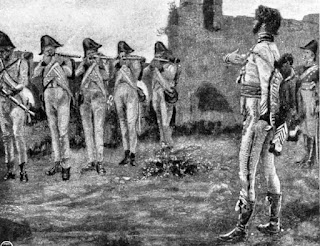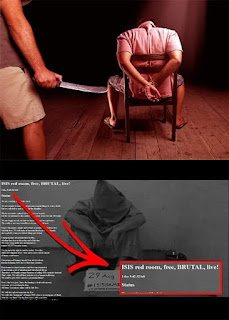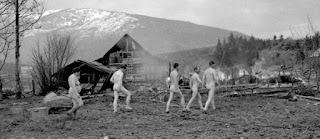2-3 May 1815 marks the Battle of Tolentino in the Neapolitan War when Field Marshal Lieutenant Baron Federico Bianchi’s 10,308 Imperial Austrian Army* infantry
2-3 May 1815 marks the Battle of Tolentino in the Neapolitan War when Field Marshal Lieutenant Baron Federico Bianchi’s 10,308 Imperial Austrian Army* infantry, 1,167 cavalry, 463 gunners & 28 guns defeated King Joachim Murat’s 21,019 Neapolitan infantry, 3,686 cavalry, 1,184 gunners & 58 guns. The victory led to the Treaty of Casalanza, ending the French Kingdom of Naples & returning King Ferdinando IV to power. It was Murat’s final battle before his execution.
Murat’s army wasn’t equal to its commander. It was perhaps the worst in Europe. It had been repeatedly defeated & driven southeast. In the process, 2 Austrian armies got separated in the mountains. Murat hoped to destroy each separately. He planned to face Bianchi at Tolentino. Afterward, he would destroy FML Count Adam Albert von Neipperg's army. He sent a small force to delay Neipperg. His main force deployed at Tolentino.
On 29 April, the Hungarian Herceg Kormányzó Huszárok No. 5 (441 horse) seized Tolentino. Murat’s army was just beyond. Bianchi realized Murat’s plan. He deployed in a defensive position. Murat decided to give battle. An artillery duel began on 2 May. Murat caught Bianchi off-guard, capturing him. The No. 5 Huszárok rescued him. Rancia Castle, garrisoned by Bianchi, changed hands many times. Murat gained some ground, but the positions were largely unchanged.
On 3 May, dense fog delayed fighting until 07:00. Murat seized Rancia Castle & the Cantagallo Hills. He sent 2 infantry divisions, including the Neapolitan Guards (1-2a Velites & Volteggiatori) at Bianchi’s left flank. Fearing a cavalry assault (which never happened), the 2 divisions formed squares – an easy target for volley & artillery fire. They bogged down in the muddy ground. They beat off an Austrian counterattack. Attacks on Bianchi’s right also failed. With Neipperg closing in, Murat ordered a retreat.
Bianchi lost 210 dead, 457 wounded, 143 missing. Murat lost 1,120 dead, 600 wounded, 2,400 captive, 1 gun & 6 caissons. He retreated to Pollenza. Pursuing Hungarian cavalry inflicted heavy losses. At Pollenza, Murat learned that a 2nd Austrian army was near. A false rumor said Britain’s navy had landed a 3rd army. He retreated to Naples. On 20 May, the Casalanza Treaty restored King Ferdinando IV to Naples’ throne. Murat fled to Provence disguised as a Danish sailor. Having betrayed Napoleon in 1814 to save his throne, he was rejected in turn. Napoleon later justified the decision:
“Fate was destined for Murat to fall. I could take him to Waterloo. But the French army was so patriotic, so honest, that it is doubtful that they had overcome the disgust & horror they felt for the traitors. I don't think I had the power to support him. And yet he could bring us victory. We missed him so much at some points that day. Break through 3 or 4 English squares – Murat was created for this. There was no more decisive, fearless & brilliant cavalry commander.”
After the Bourbon restoration, Murat went to Corsica. Austria issued him a passport on the condition that he renounce the title of king & submit to Austrian laws. He was granted the title of count & a residence in Bohemia. Instead, he tried to start an uprising in Calabria. He arrived with 6 ships & 250 men. On landing, most of them deserted him. Neapolitan troops captured him at Pizzo. He was executed by firing squad on 13 October. His death is recorded thus:
“On being asked if he had any request to make, he said he wished to have a bath prepared for him & perfumed with a bottle of eau-de-Cologne, &, as a last request, that his eyes should not be bandaged. Both wishes were granted. By order sent by King Ferdinand, 12 of his own soldiers were selected to shoot him. When the fatal hour came, seeing the emotion of his men, Murat said: ‘My friends, if you wish to spare me, aim at my heart.’”
His recorded last words are more straightforward: “Soldiers! Do your duty! Straight to the heart, but spare the face. Fire!”
He was 48 years old.
*The Imperial Austrian Army was famously a multinational organization. Only a small percentage were ethnic Germans. At Tolentino, Bianchi led 5 Austrian, 5 Hungarian, 2 Styrian (German/Hungarian) & 1 Tyrolean (German/Italian) infantry battalions. He led 6 Tuscan (Italian) & 5 Hungarian cavalry squadrons.











Comments
Post a Comment